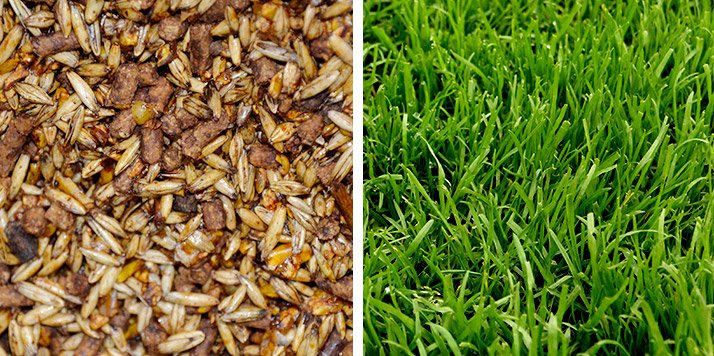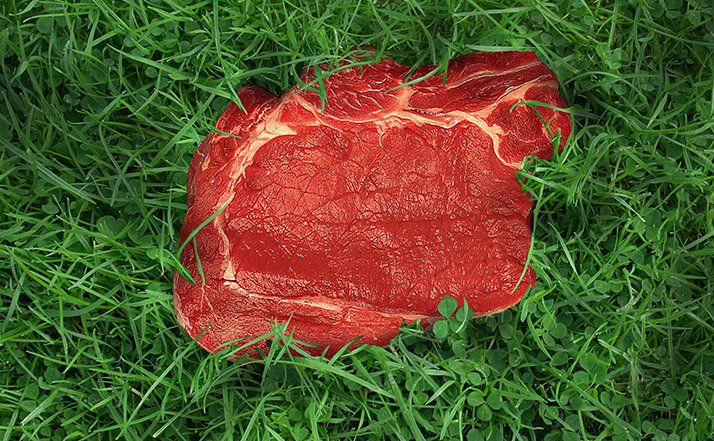Bindaree the biggest mover in top Australian companies by turnover
Shan Goodwin 17 Mar 2016, 12:33 p.m.
 |
| Bindaree Beef on plates in China. |
BEEF businesses have made solid gains in the latest Australian top 1000 companies by turnover listed by prominent business analysts IBISWorld, with Northern NSW processor and exporter Bindaree Beef leading the way.
Against a list that includes the likes of BHP, Wesfarmers and the big four banks, the family-owned Bindaree was the biggest mover, jumping an incredible 338 places on the list in a single year.
Bindaree rose from position number 873 in 2014 to 535 last year, on the strength of a 23.5 percent increase in total revenue to $705 million.
Other beef industry big movers included Thomas Foods, which recorded revenue growth of 11.8pc in 2014-15 ($1.23 billion in 2014-15, up from $1.1 billion the previous year) and Sanger, which recorded revenue growth of 27pc in 2014-15, with revenue jumping to $644.0m, up from $506.8m the previous year.
AACo moved up 126 places, recording revenue growth of 27.5 pc.
IBISWorld senior industry analyst Brooke Tonkin said meat processors targeting export markets performed strongly during the 2015 financial year.
“Beef has continued to be a strong export commodity for Australia,” she said.
“Although competition from other prominent markets has increased, demand for high-quality Australian beef has remained strong, particularly from Japan and other nearby Asian nations.”
The vast majority of operators in the meat processing industry, particularly those in the beef segment targeting export markets, performed well in 2014-15.
“Industry revenue grew 17.1pc during 2014-15, which reflects strong demand for beef and record high prices that these operators are benefiting from,” Ms Tonkin said.
“Export revenue grew by 31.5pc during 2014-15, showing that companies targeting export markets fared even better than their peers targeting the local market.
“Players like Bindaree, Thomas Foods and Sanger operate on a larger scale than most others in the meat processing industry. This gives them greater capacity to process cattle and sell beef than smaller, niche players and as such, they have enjoyed particularly strong revenue growth.”
Meanwhile, retail behemoth Wesfarmers has taken the number one position in the list, overtaking major rival Woolworths, on the back of robust performance of its grocery arm Coles, which has gained market share in the supermarkets and grocery stores industry.
The company that fell the furthest was Mount Gibson Iron, which plummeted 511 spots, no doubt a result of enduring numerous challenges including volatile and often lower iron ore prices, a flooded mine and losses in foreign exchange hedges, according to analyst Jem Anning.
Direct-to-customer refocus underpins Bindaree’s move
BINDAREE Beef, which exports to 55 countries, has been shifting away from being a commodity supplier towards being a branded, direct-to-customer business.
That had involved ‘a complete reshaping of the business from the start to finish’, chairman JR McDonald said.
That change in direction ‘to keep up with what the market wants’ is what underpinned the Inverell company’s listing in the latest IBISWorld Top 1000, he said.
“We are starting our third year of this refocus and we still have a lot of areas to improve in,” Mr McDonald said.
“I don’t expect we will have hit our full potential in our branded division for another two to three years.
“The crash in the US market over the past four months has shown us we need to do things better.
“However, we are now dealing in a much higher quality product with new customers and new markets and we need to be able to supply those customers 52 weeks of the year.”
That had required the business to set up supply chains and ‘pathways’ to ensure consistent week-on-week supply.
Mr McDonald said the aim had been to establish a position whereby bigger clients were supplied weekly or monthly while ensuring room for smaller clients to be delivered to once or twice per year.
“In addition, we have now also started to work with producers on growing out weaners ready for Myola feedlot on a fixed price basis so we have a consistent grainfed supply,” he said.
Bindaree livestock manager Andrew Simmonds is also launching a new natural grassfed program - no antibiotics or hormones - this week, which will start in April.
“This is a branded product completely based on our customers’ requirements and certainly something that I expect will become very central to Australian exports into the future,” Mr McDonald said.
Bindaree had moved into areas he never could have imagined.
“We now employ a team based around innovation and research and development of new products and we are about to include a chef in that team to work with our retail customers on new ‘shelf-ready’ products,” he said.
“We have also taken responsibility for marketing our brands in-house with a five-person marketing team based in two countries.
“Beef grading is still the number one issue that is holding back the Australian producer back from getting more value for the carcase and we are a big supporter of Meat Standards Australia grading.
“Unlike 20 years ago, every customer who takes our beef wants to know the exact eating quality of it. We, as an industry, must deliver that.
“Chicken and pork have got it right and they are continually taking market share from the beef industry because we - as an industry - deliver misrepresented beef onto the dinner plate.”
It was imperative the industry had a grading system whereby every animal slaughtered was graded and clearly defined for the customer, he said.
“This business does not allow you to sit still and do what you have been doing for the past 20 years,” Mr McDonald said.
“The truth is, the whole Australian beef Industry needs to re-look at itself and provide itself with a shake-up.
“We have the same convoluted structures and the same industry bodies that have been representing the industry for the past 20 years and the Industry needs to make changes.
“We need better representation, better leadership, less bureaucracy and we certainly need lower levies and costs on the industry.”
The story Bindaree the biggest mover in top Australian companies by turnover first appeared on Farm Online.
---------------
Shopthit Butchery is the only importer and distributor for Bindaree Beef in Vietnam.
You always can find the best cuts of beef in our store at:
Location 1: 42 Nguyen Binh Khiem, Dakao Ward, District 1, Hochiminh City.
Location 2: 392 Nguyen Dinh Chieu, Ward 4, District 3, Hochiminh City.
Location 3: Cho pho Fresh Food, 77B Hoang Van Thu, Ward 15, Phu Nhuan District, Hochiminh City.
HOTLINE: 0946 800006 | 0946 800 008 | 0908 801 108
Website: www.en.shopthit.com | www.shopthit.com
Facebook: /Shopthit.butchery
You always can find the best cuts of beef in our store at:
Location 1: 42 Nguyen Binh Khiem, Dakao Ward, District 1, Hochiminh City.
Location 2: 392 Nguyen Dinh Chieu, Ward 4, District 3, Hochiminh City.
Location 3: Cho pho Fresh Food, 77B Hoang Van Thu, Ward 15, Phu Nhuan District, Hochiminh City.
HOTLINE: 0946 800006 | 0946 800 008 | 0908 801 108
Website: www.en.shopthit.com | www.shopthit.com
Facebook: /Shopthit.butchery





